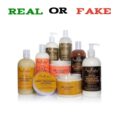Shea butter is fat that’s been extracted from shea tree nuts. It’s off-white or ivory-colored and has a creamy consistency that’s easy to spread on your skin. Most shea butter comes from shea trees in West Africa. Shea butter has been shown to help with several skin conditions. It also has antimicrobial properties. People in West Africa have used shea butter as a natural remedy to treat wounds and other ailments for centuries. It also posses UV protection.
High concentrations of fatty acids and vitamins make shea butter an ideal cosmetic ingredient for softening skin. Shea butter also has anti-inflammatory and healing properties. Using shea butter can condition, and soothe your baby’s skin.
A baby’s skin is delicate and so is their immune system. While there are several normal newborn rashes, chemicals, fragrances, and dyes in clothing, detergents, and baby products which can cause newborn skin irritation, dryness, chafing, and rashes. Using natural products like shea butter reduces the risk of the undesirable side effects that often accompanies some baby products .
What Can I Mix With Shea Butter For My Baby?
When it comes to babies, it is better to use unrefined shea butter because this type of shea butter has no additional chemicals or preservatives added during the extraction process. However, Shea butter also has a very distinctive smell and can sometimes be off-putting.
To avoid a situation where your baby smells bad, it is better to mix your shea butter with a more appealing baby cream, lotion or ointment. Anecdotal evidence suggests that mothers mix shea butter with Cussons baby oil and other trusted brands.
A simple moisturizer can be made using shea butter and petroleum jelly, two inexpensive ingredients. Petroleum jelly is a skin protectant that will help moisturize your baby’s skin as well as seal in the moisture. Baby lotion serves a similar purpose and can also lend some scent to your shea butter. You can make a batch of moisturizer with shea butter, petroleum jelly and baby lotion, to reap the many benefits of Shea butter. SEE: How Long Does It Take For Shea Butter To Work?
Common Baby Skin Care Conditions Every Mother Should Know
Infants are known for having soft, sensitive skin. Sometimes, this leads to skin problems. Here are some of the most common baby skin care conditions.
Dry Skin
We all get dry skin from time to time. The same is true for babies! This is especially common among newborns, who may have dry, peeling skin while they adjust to life outside the womb. Normally, newborn peeling skin goes away in a week or two. Dry skin, on the other hand, can affect children of any age. It may be caused by harsh skin care products, dry or cold weather, or a number of other factors.
Cradle Cap
Seborrheic dermatitis, better known as cradle cap, is an extremely common newborn baby skin care condition. While it can look alarming, cradle cap is neither painful nor contagious. To put it very simply, cradle cap is just dandruff for babies.
Heat Rash
Yet another common baby skin care condition is heat rash. Infants tend to have a good amount of baby fat, which can lead to folds and creases in their skin. Combined with tight-fitting diapers and clothing, this excess skin can become hot and irritated, leading to heat rash.
Diaper Rash
Diaper rash is similar to heat rash but occurs exclusively around your baby’s waistline and thighs. Heat may be a contributing factor to diaper rash, but the moisture and bacteria that diapers lock in also play a huge role. To avoid diaper rash, simply change your baby’s diapers as soon as they become soiled and make sure you’re always cleaning your baby’s bottom the right way.
Baby Acne
Most of the time, we think of acne as a skin problem for teenagers in the midst of puberty. However, baby acne is a common baby skin care condition, too. Baby acne is perfectly normal. It doesn’t cause any discomfort and is easily treated.
Eczema
Atopic dermatitis, also known as eczema, is characterized by patches of dry, irritated, reddish-colored skin that doesn’t seem to have any obvious causes. In reality, eczema is an allergy-related issue. While experts aren’t sure why, research has shown that baby eczema is on the rise. Unfortunately, eczema is one baby skin care condition that does cause discomfort. On the bright side, treating baby eczema is possible.
Choosing The Best Baby Skin Care Products
When it comes to baby skin care, it’s essential to always choose skin care products that are specially formulated for a baby’s skin. Your little one’s skin care products should be hypoallergenic and tested under the supervision of dermatologists and pediatricians.







